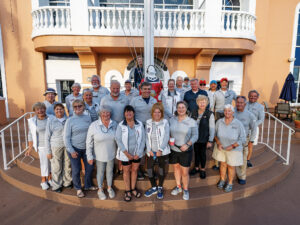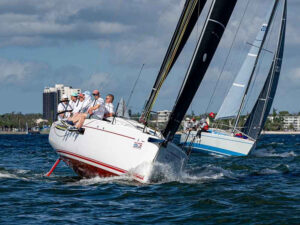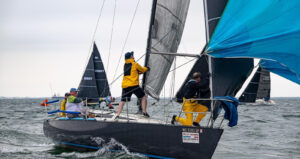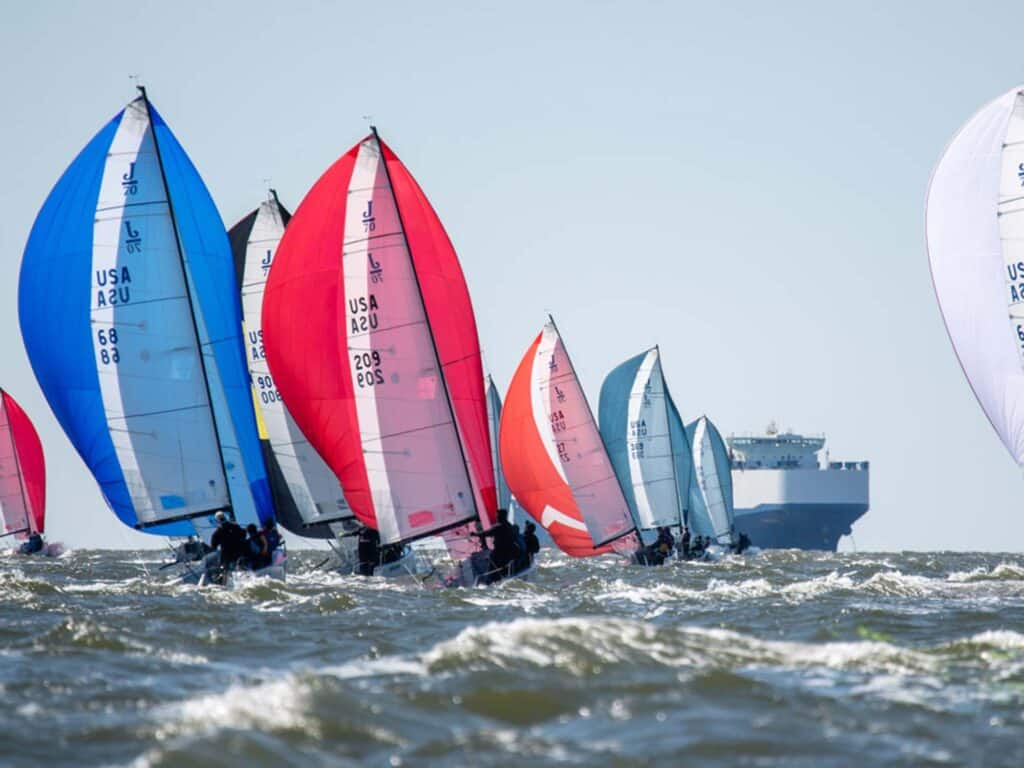
Spring brings excellent weather conditions that arguably make it the best time to sail in Annapolis. Make sure your boat is tuned and trimmed properly so you can quickly get where you want to go on the course. Then it’s heads-up sailing to navigate the strong tidal currents and potentially shifty breeze.
Early May might be the ideal time to sail in Annapolis: the average temperature is a pleasant 69 degrees, the average wind direction is west, and the average speed is 7 knots. When you sail in Annapolis, you can almost always count on strong currents and choppy conditions due to motorboat traffic. The current flow in the Chesapeake Bay is tidal − flood tides run south to north and ebb the opposite. Many flowing rivers and large tributaries affect the current in the bay, meaning published tide tables are not 100-percent accurate and highly dependent on location and recent rainfall. It is paramount to keep an eye on the many signs in the bay that can give you hints to the fluctuations in strength and direction of currents, such as the tankers anchored in the shipping channel, the buoys, and the many area crab pots.
These factors make determining when the current will switch in the lighter breezes critical to top finishes. In the spring, the ebb tide is usually much stronger than the flood tide, due to the amount of rainfall and spring tides. Keep an eye on all available signs and remember the current rips in the channel’s deeper water. Also remember to set up your boat for the chop on the weekends. Between swirling currents and boat traffic, smooth water is hard to find in the Chesapeake Bay this time of year.
One of the many challenges Annapolis presents in the spring is the changing wind conditions caused by the approaching frontal systems or the lack of approaching systems. Determining the weather system you are racing in will help you plan which wind direction will prevail in the day’s races.
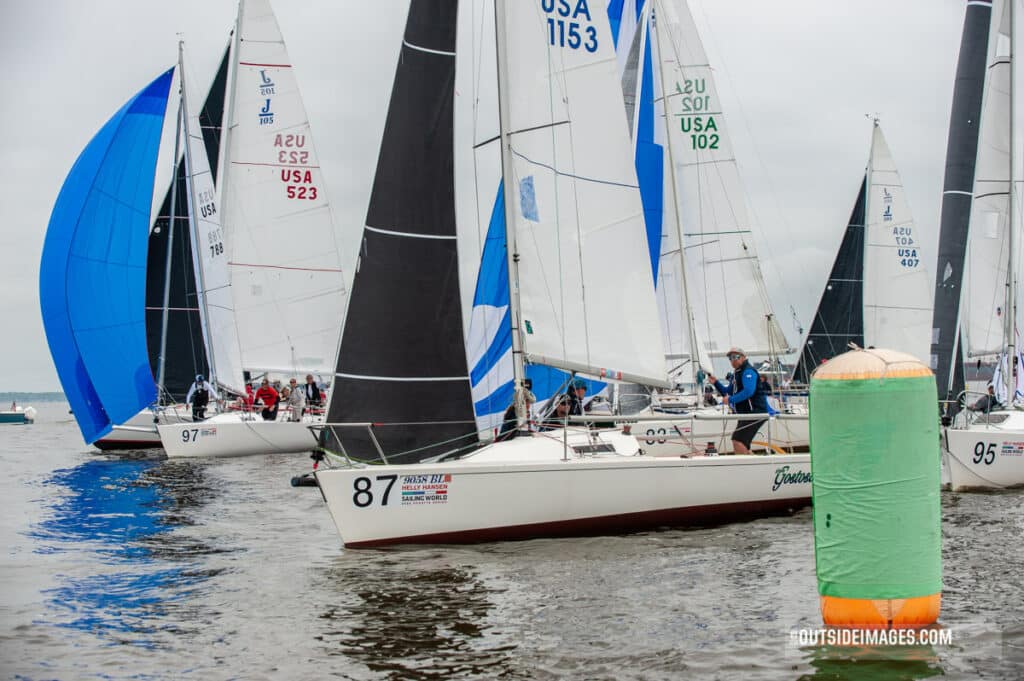
Here are some tips to understand the local conditions a bit better:
- Clear skies and air temperatures that are warmer than the water temp is a typical spring day, and it’s not a good combination for breeze this time of year. The sea breeze has a hard time developing due to the cooler temperatures, so expect light air overall.
- Southwest is the prevailing wind direction during the year, but southerlies are generally weak in the spring unless accompanied by a frontal system.
- As a front goes through Annapolis, the wind will clock to the west until it reaches the northwest, which is the prevailing cold front direction. Winds will blow from the northwest at 20-knots for a few days and then clock to the northeast and die, depending on the strength of the front.
- Westerlies are unstable with 25-degree shifts (or more….) and heavy puffs. Watch for more wind from the Severn River and off the closest weather shoreline.
- Northerlies are somewhat stable in pressure, but with the breeze coming across the land the shifts are fast and typically very large.
- Easterlies are dying breezes and especially weak when following a dying northerly. Often the far right pays because of the new direction and the far left pays because of old pressure. The middle normally suffers.
If you have any questions, reach out to the Quantum Annapolis team or come chat with us during the regatta.


